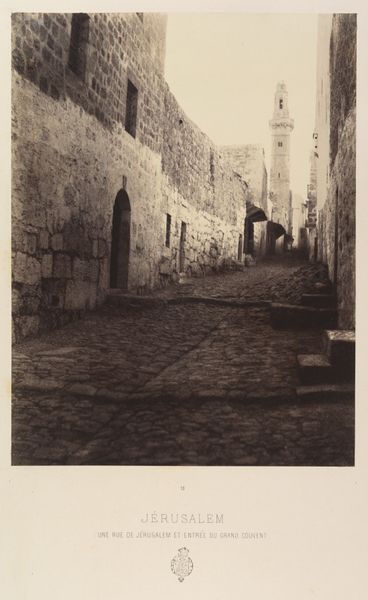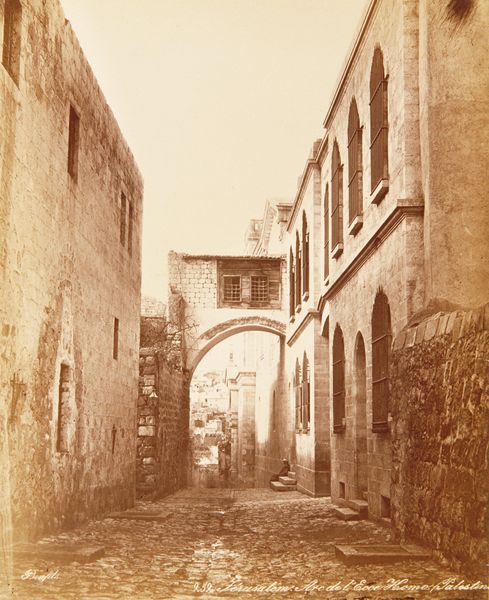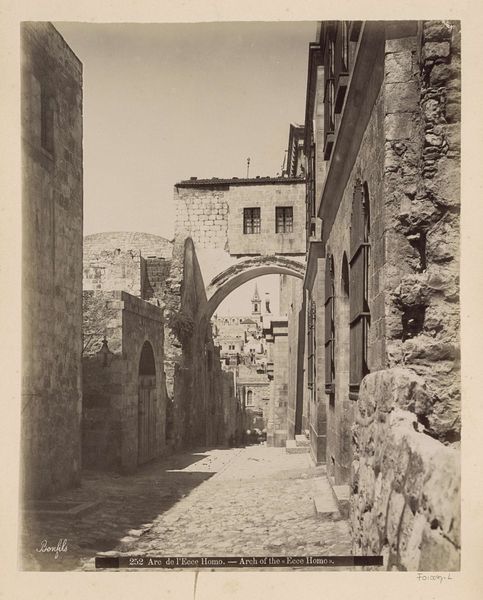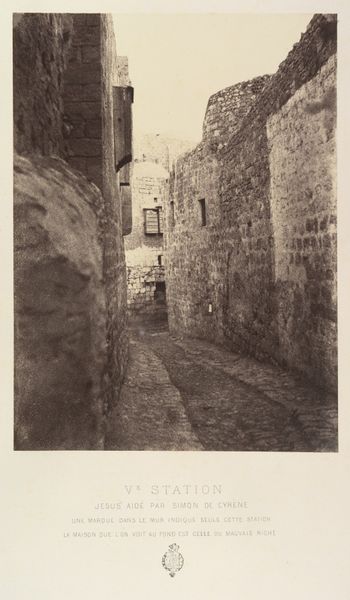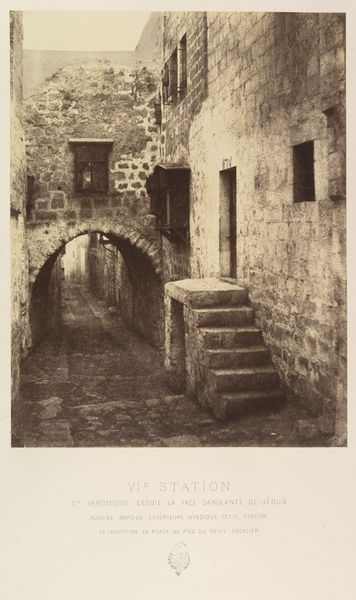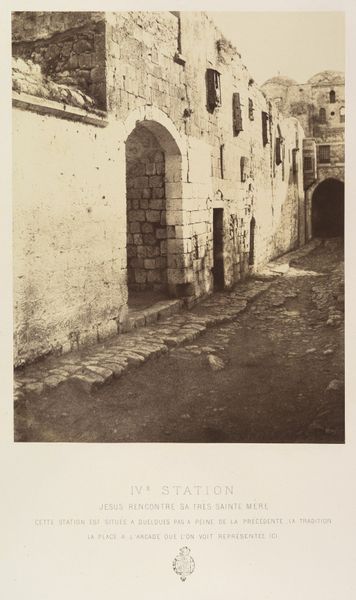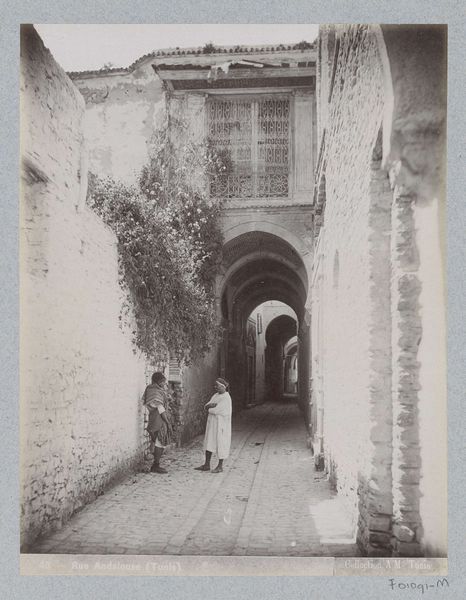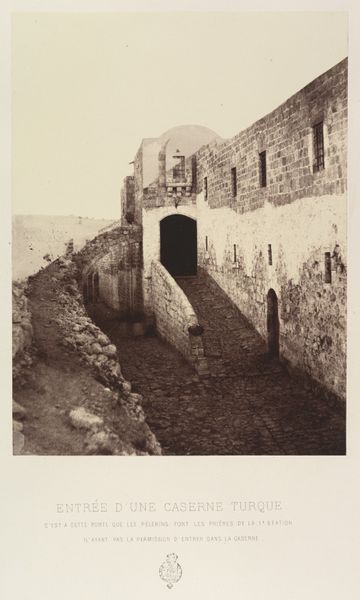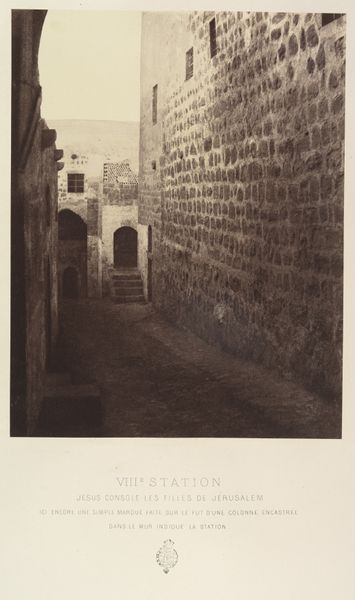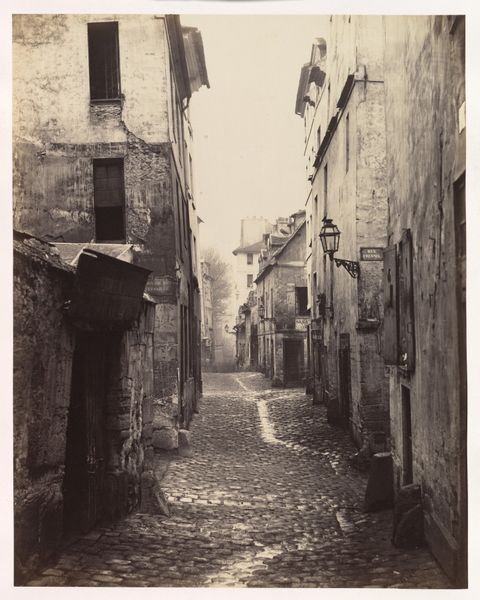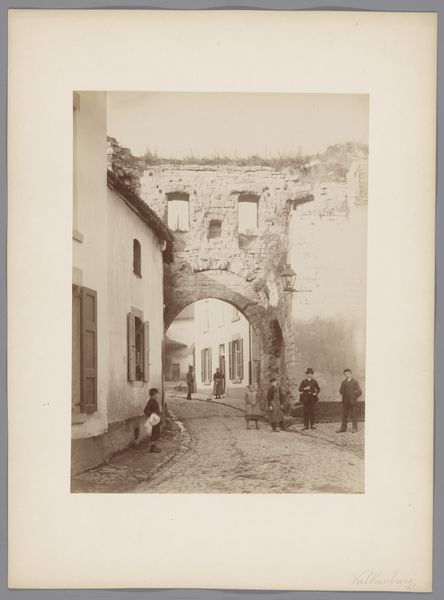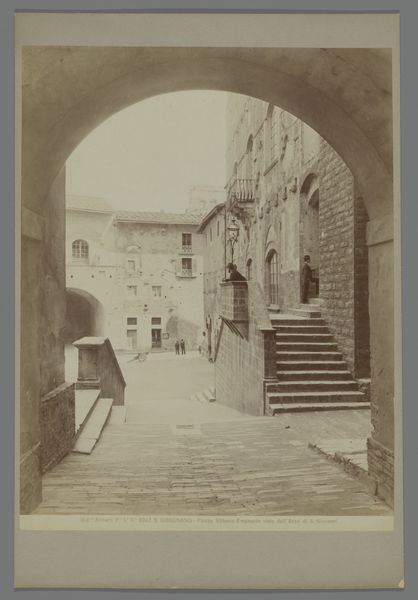
Vijfde kruiswegstatie op de Via Dolorosa in Jeruzalem c. 1867 - 1895
0:00
0:00
maisonbonfils
Rijksmuseum
photography, gelatin-silver-print
#
landscape
#
photography
#
gelatin-silver-print
#
19th century
#
islamic-art
#
street
Dimensions: height 282 mm, width 223 mm
Copyright: Rijks Museum: Open Domain
Curator: The artwork before us, titled "Vijfde kruiswegstatie op de Via Dolorosa in Jeruzalem," meaning "Fifth Station of the Cross on the Via Dolorosa in Jerusalem," is a gelatin-silver print, most likely produced sometime between 1867 and 1895 by Maison Bonfils. It's now part of the Rijksmuseum collection. Editor: Immediately, I'm struck by the texture. Look at those rough-hewn stones making up the buildings, contrasted against the worn, uneven paving of the street. You can almost feel the sun beating down. Curator: The photograph gives a specific sense of place. Via Dolorosa, of course, is a significant pilgrimage route. It evokes the political and religious tensions inherent in such a charged location. We can almost trace how this location shaped this community at the time. Editor: Right, but I’m also drawn to the pure physicality of the image. Think about the Bonfils studio. They are dealing with collodion processes, silver halides, and all the variables involved in creating a photograph in that era. And the finished result offers that almost haptic experience. I see layers of labor, from quarrying the stone, shaping each block, to Maison Bonfils who carried equipment through that ancient street, exposing the photograph, making it appear as if you are standing here looking at the original source. Curator: The perspective directs the eye. See how it guides our vision down the narrow street toward those figures, subtly reminding us of the individuals within a larger, historically loaded landscape. Photography at this time played a crucial role in shaping perceptions of the Middle East. The studio's production fueled orientalist sentiments prevalent during that era. The Via Dolorosa then becomes both a geographical location and a symbolic representation open to cultural appropriation. Editor: I see the contrast there too. Those small human figures make this street feel very vast. Almost otherworldly. Consider what a monumental impact photography had by allowing artists to use materials and techniques in order to disseminate accurate records to the public at large. This challenges that definition by introducing artistry to create an ethereal sensation using natural material elements like light and natural stone surfaces. Curator: Reflecting on this image, one appreciates its layers. It serves as both a document and a constructed narrative of a deeply significant place. Editor: It does urge you to meditate. Thinking on those hands-on material methods offers profound considerations for even modern creation techniques.
Comments
No comments
Be the first to comment and join the conversation on the ultimate creative platform.
